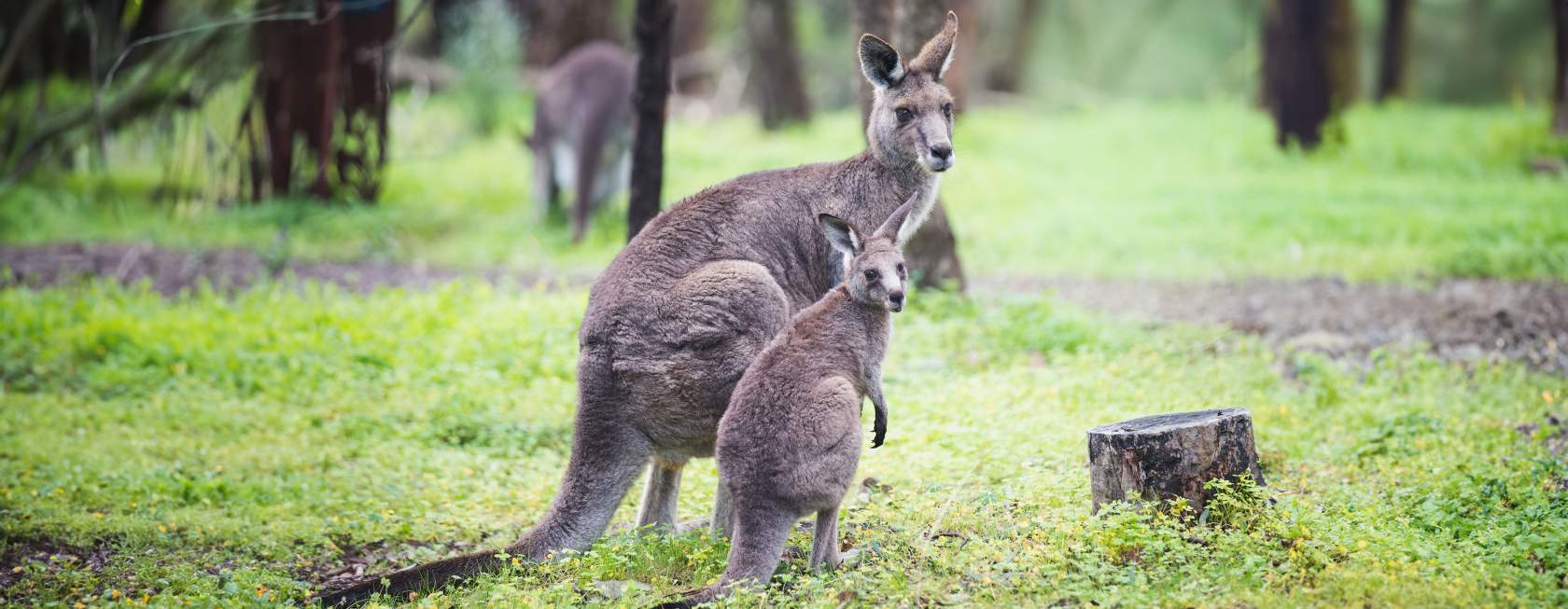
There are three species of kangaroo (Macropus) living in Victoria; the eastern grey kangaroo, western grey kangaroo and the red kangaroo. The eastern grey kangaroo is the most common and it is the species we receive the highest number of calls for across all Victorian wildlife.
Appearance
Eastern grey kangaroos have a sandy brown to grey coat, with lighter colouring on the chest and darker colouring present on their hands, feet and the tip of the tail. Eastern greys typically stand 1-1.5 metres tall, however mature adult males can reach heights of over 2 metres!
Distribution and habitat
As the name suggests, eastern grey kangaroos are commonly found along Australia’s east coast, extending down into Tasmania. The east coast region offers a variety of habitats, but eastern greys show a particular preference for semi-arid mallee scrub and open woodlands. Interestingly, eastern grey kangaroos have adapted well to human-altered landscapes and are frequently spotted grazing on farmlands or the sides of roads where food is available. Unfortunately, this does bring them frequently into conflict with humans.
Diet
Being herbivores, eastern grey kangaroos primarily graze on grasses, roots, shrubs, and even fungi. Their preference for certain types of vegetation is influenced by seasonal availability. While they do consume dry grass, which can be more challenging to digest due to its tough fibres, they tend to favour young green shoots when available. In addition to grasses, eastern grey kangaroos may browse on various shrubs and herbs, especially during periods of drought when other food sources become scarce. Their ability to adapt their diet helps them thrive in various environments, from open grasslands to forested areas, making them resilient grazers in the Australian landscape.
Behaviour
During the day, they mostly rest in shady, covered areas, especially during the hotter months. Kangaroos exhibit a unique form of thermoregulation, licking their forearms and allowing the saliva to evaporate, which cools the body when they’re hot. Kangaroos travel and feed in groups called mobs and recent research suggests they form long-term social bonds.
Breeding season
There is no specific breeding season as kangaroos breed year-round, however it can peak during summer. When a joey is born, it weighs less than 1 gram and climbs its way up into the mother's pouch. There it will stay for about 8 months until it can survive outside of the pouch. During this stage, it will still drink from the teat and hop back into the pouch periodically. Joeys don’t become fully independent until 18 months of age.
General fun facts
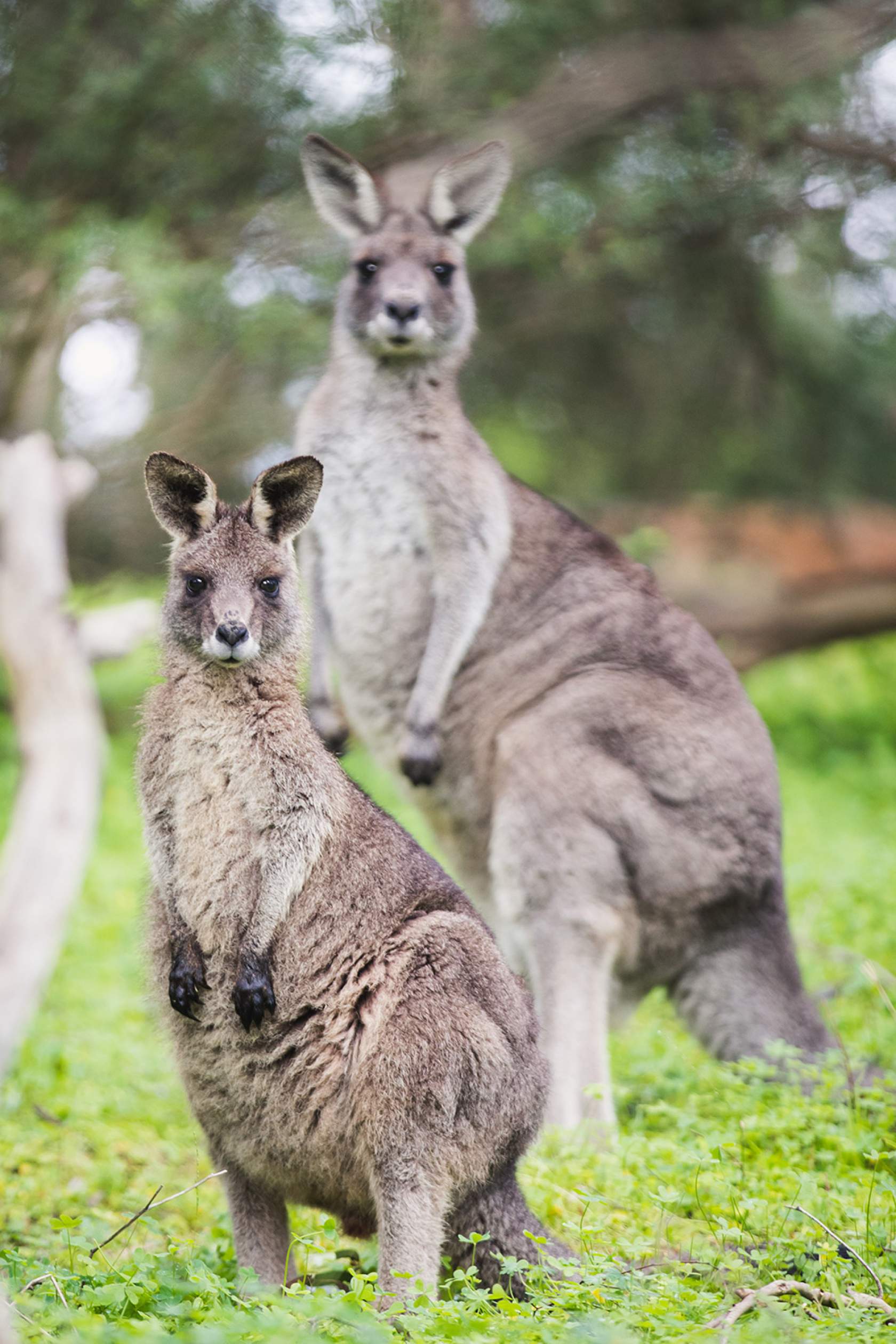
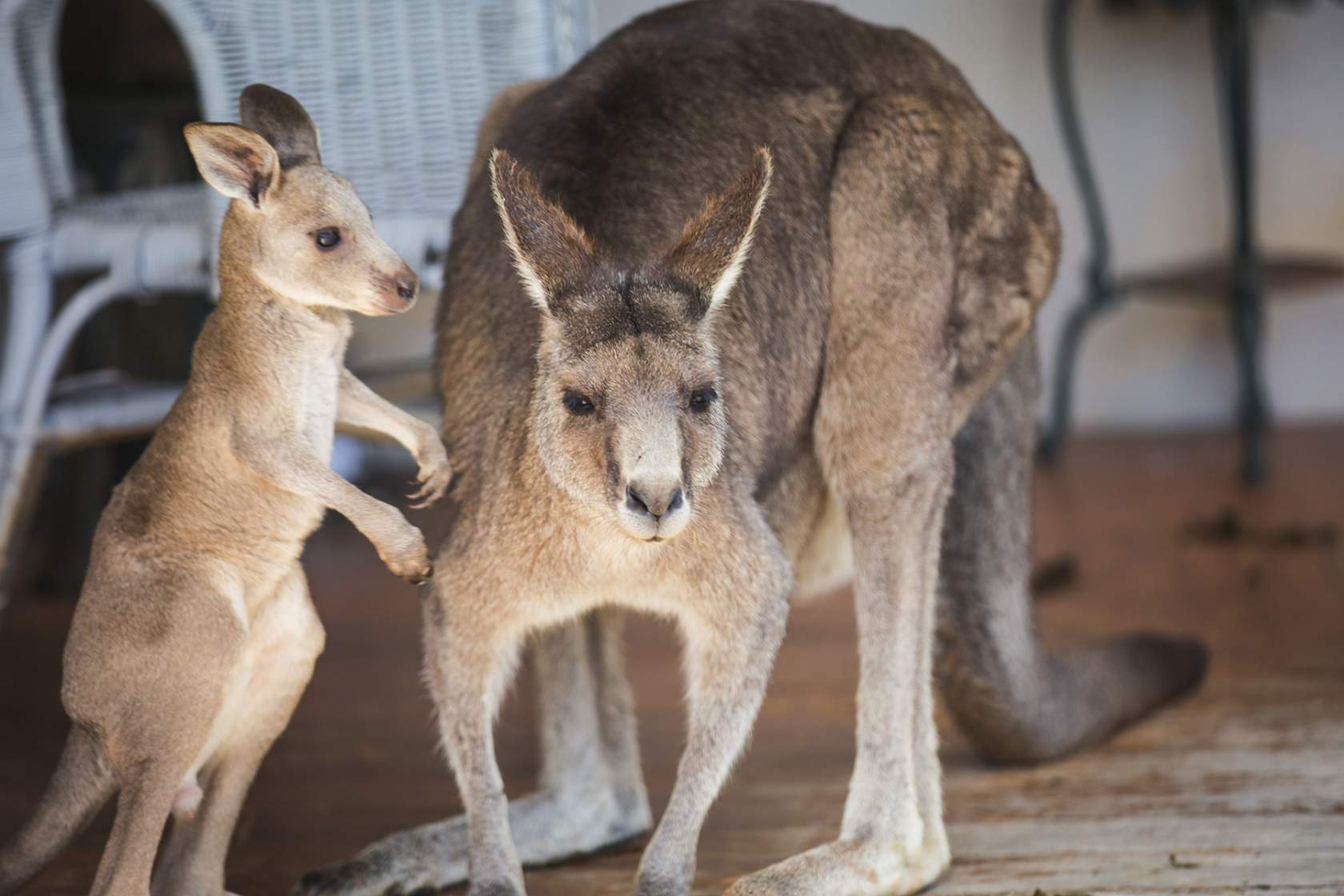
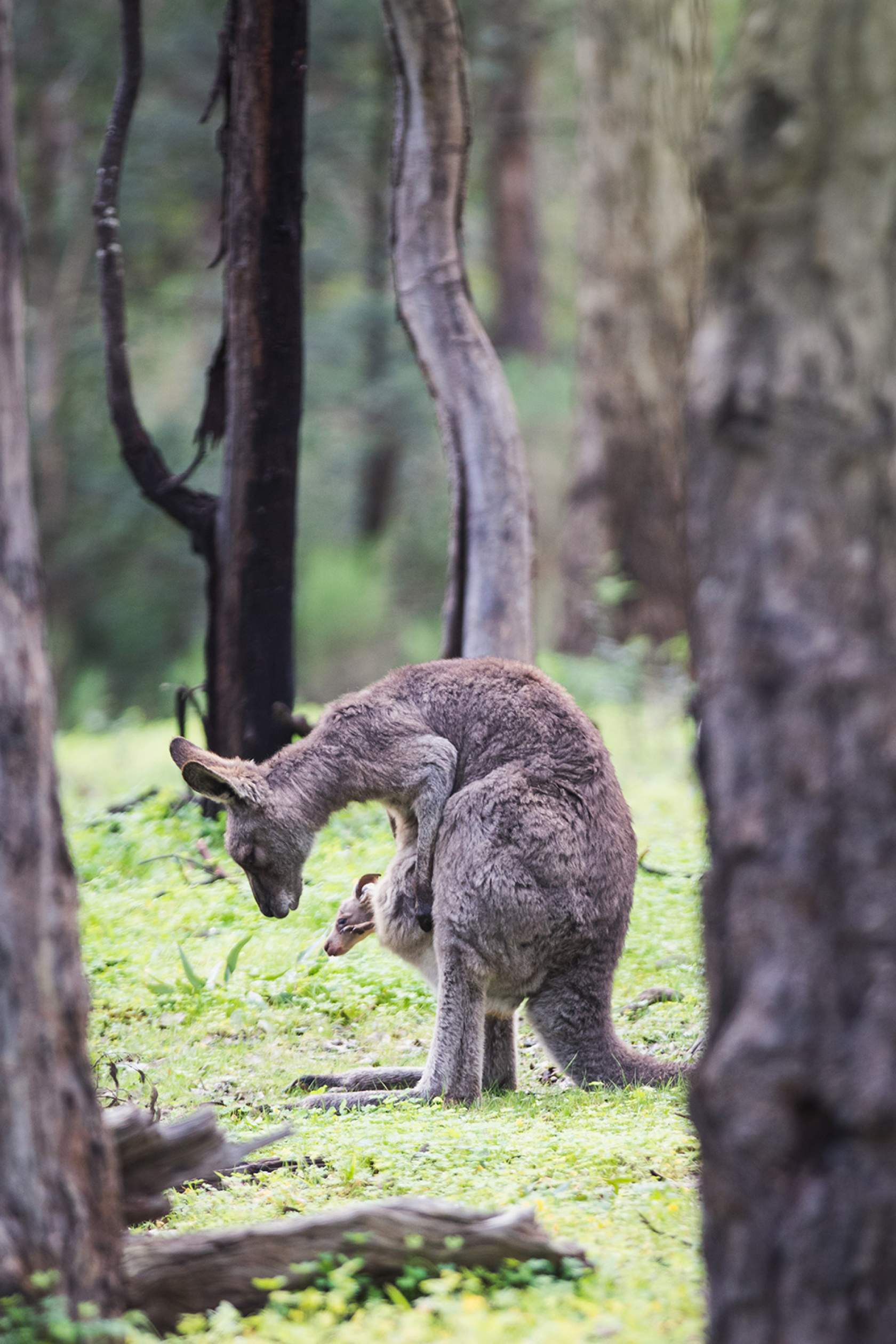
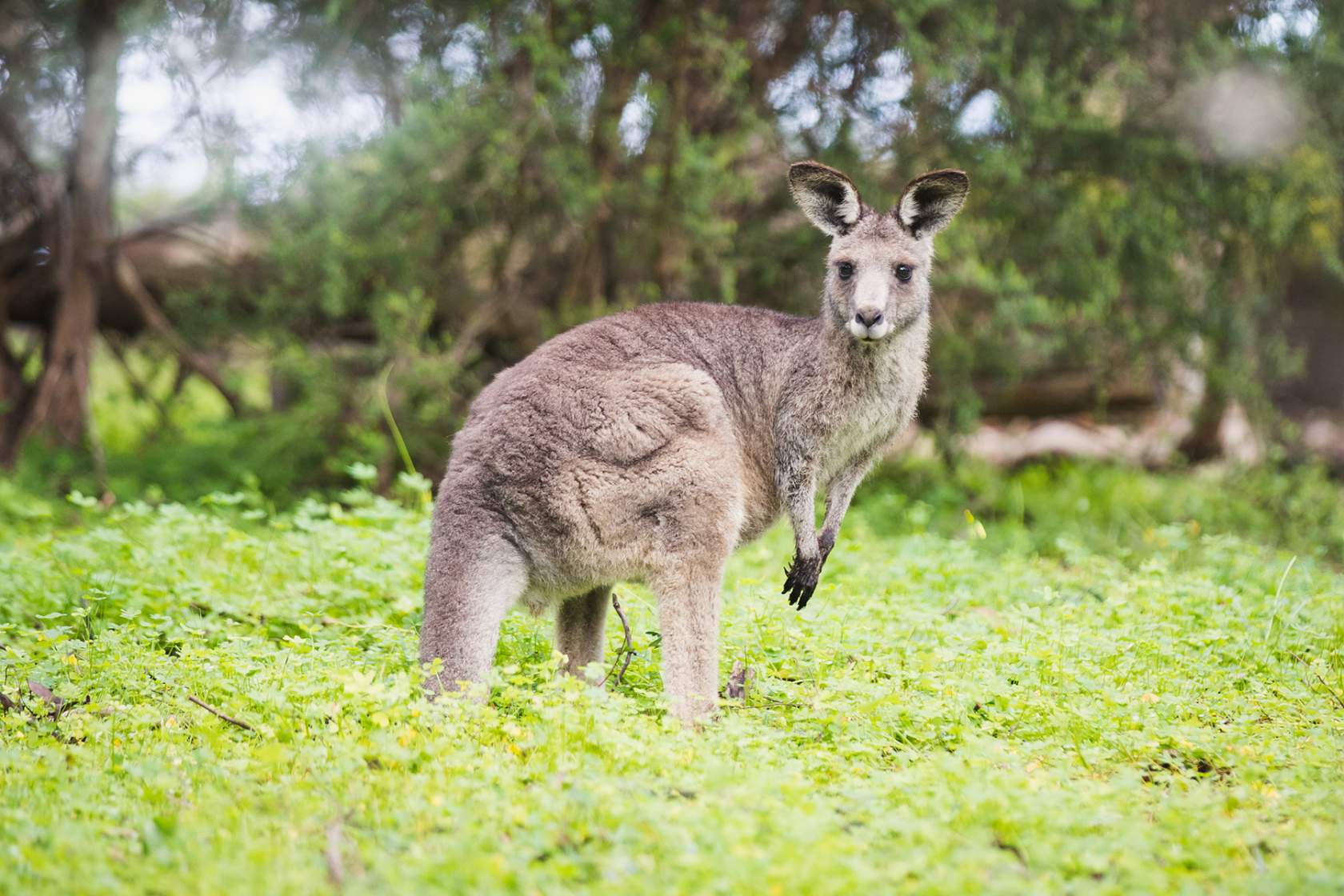
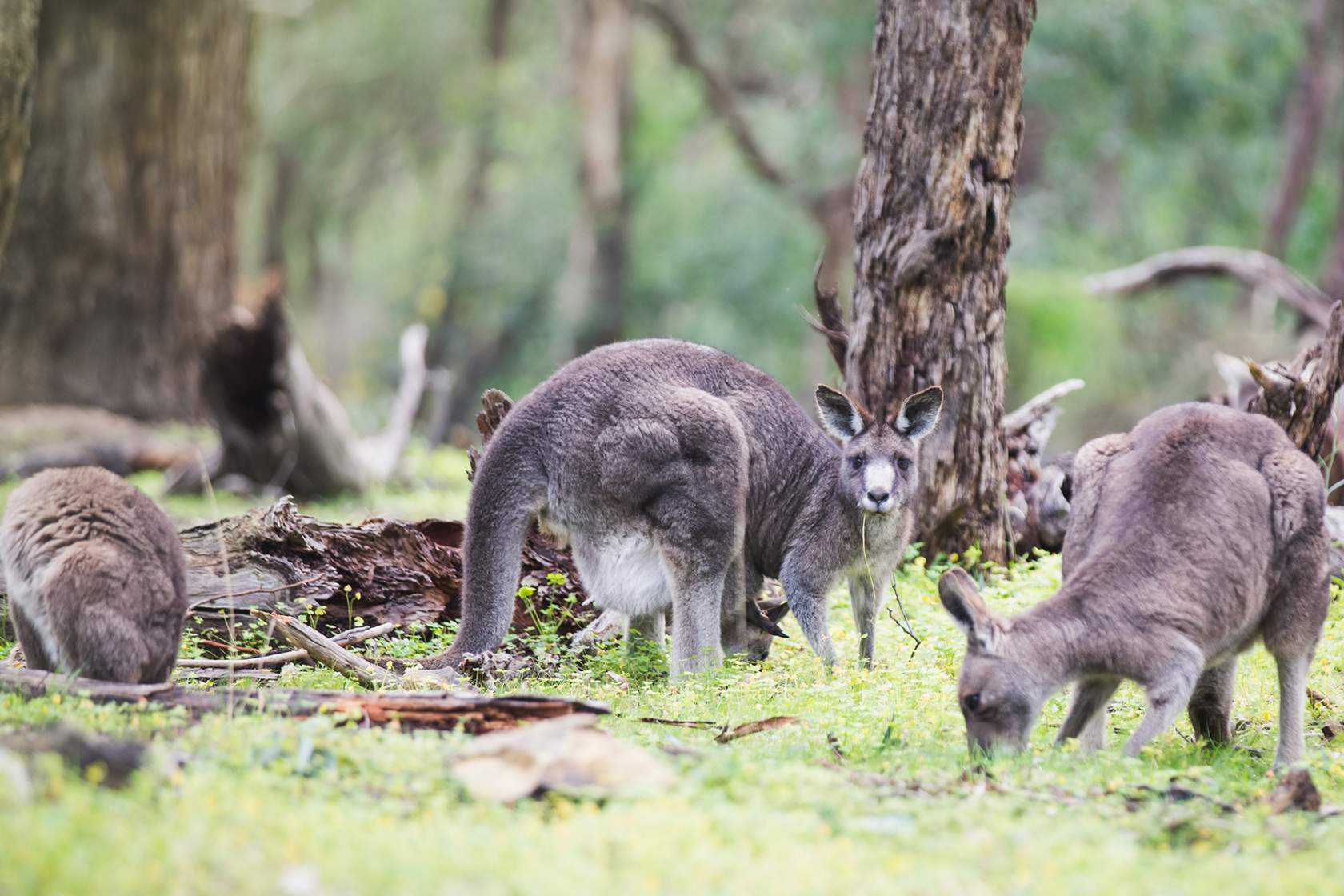
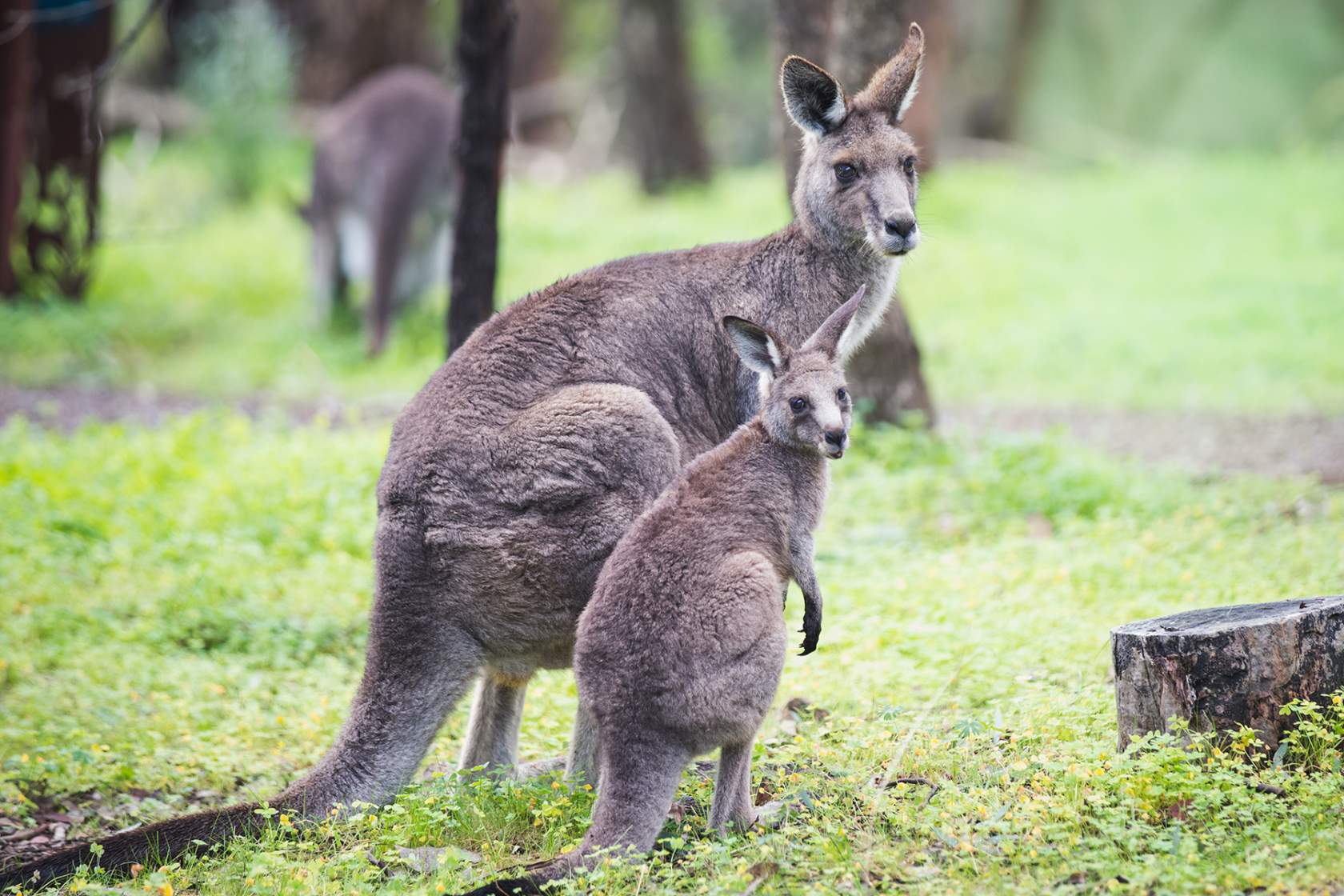
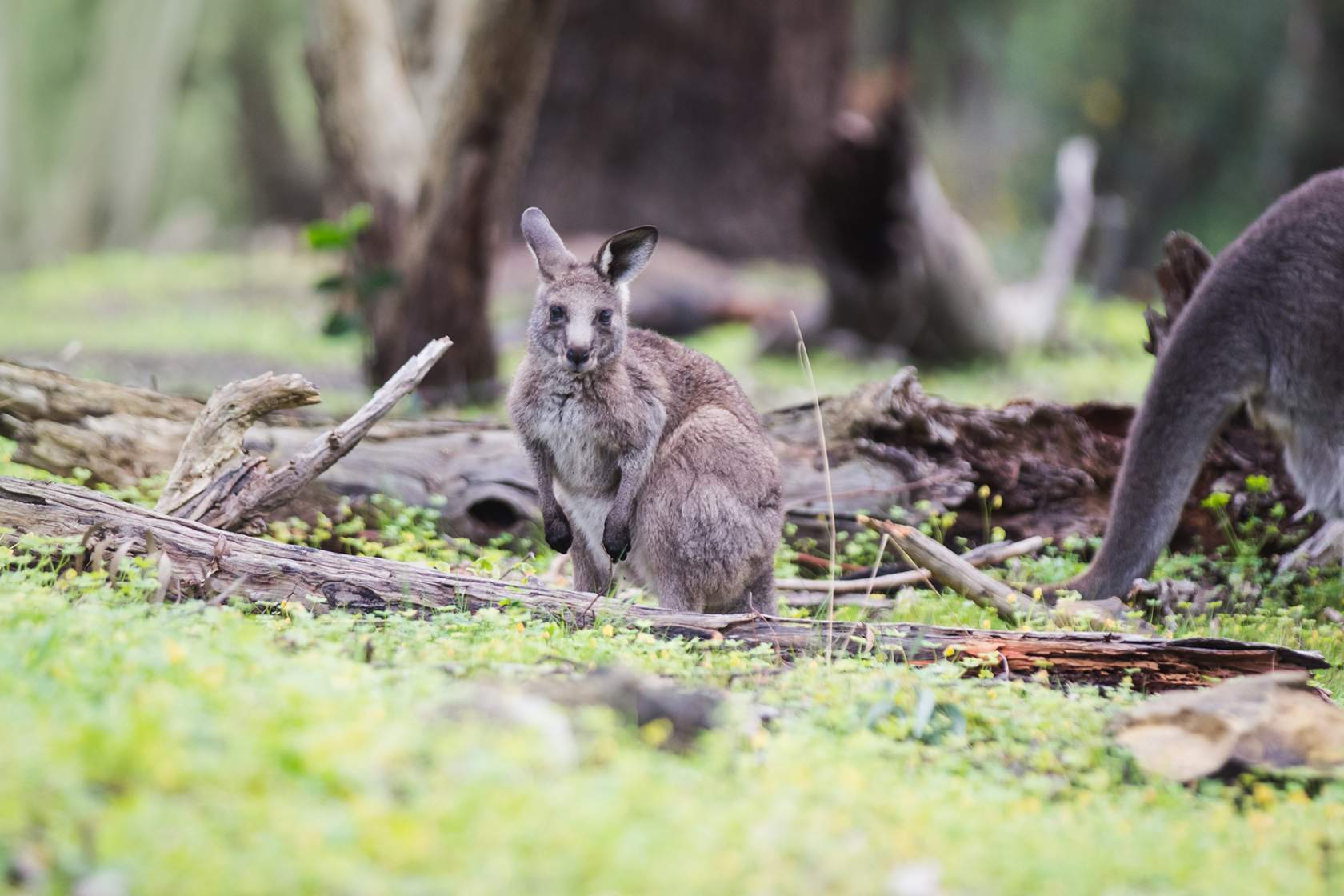
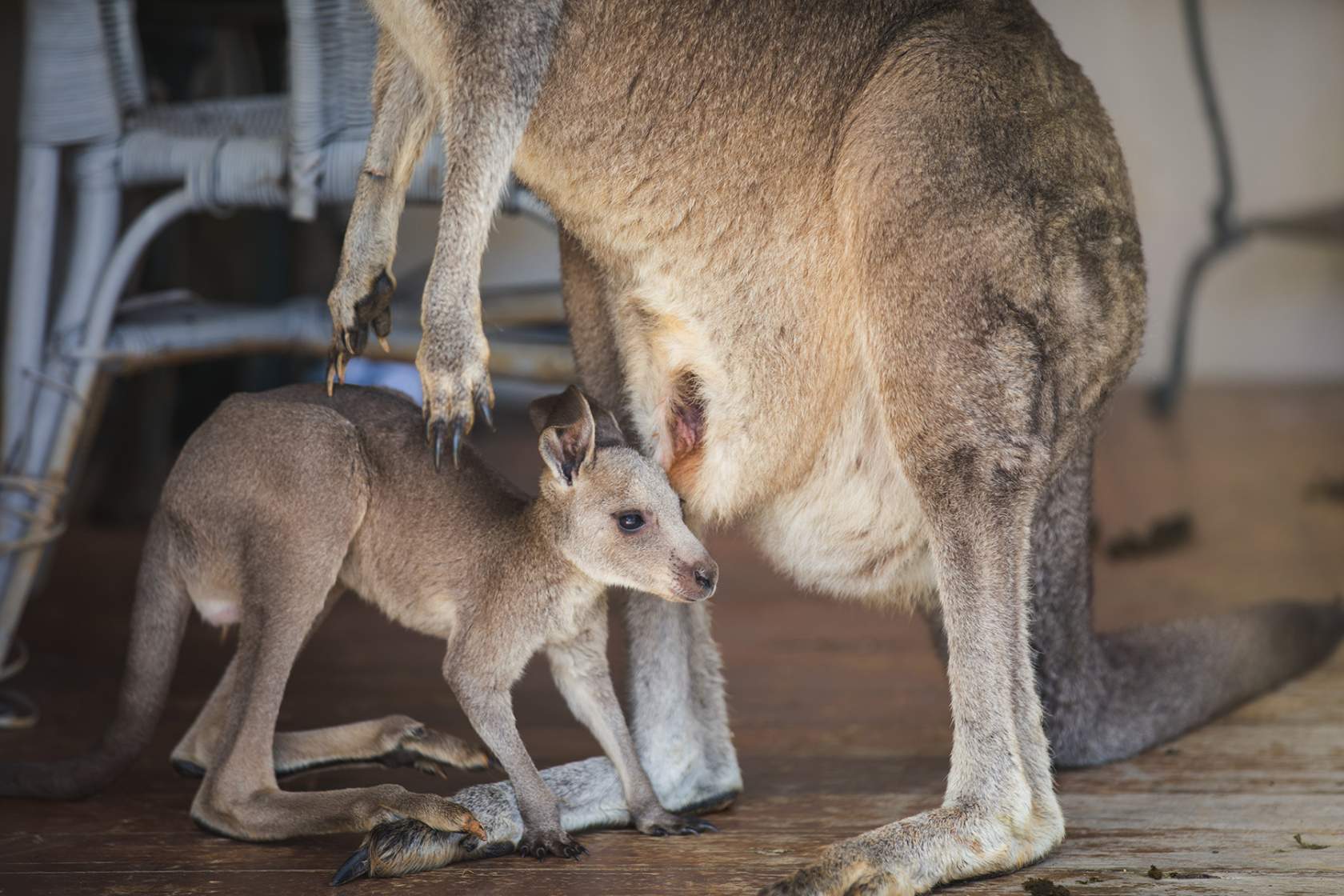
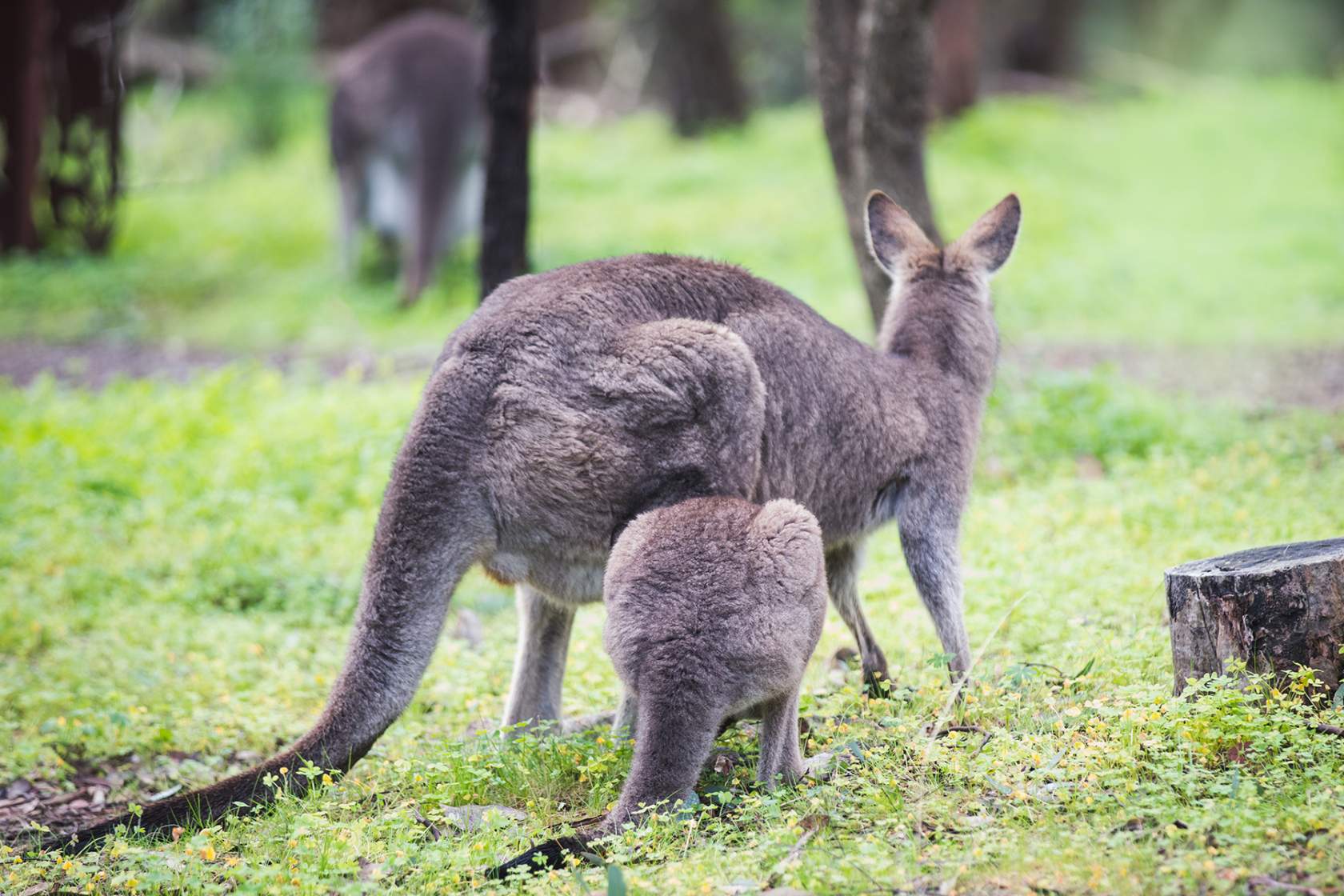
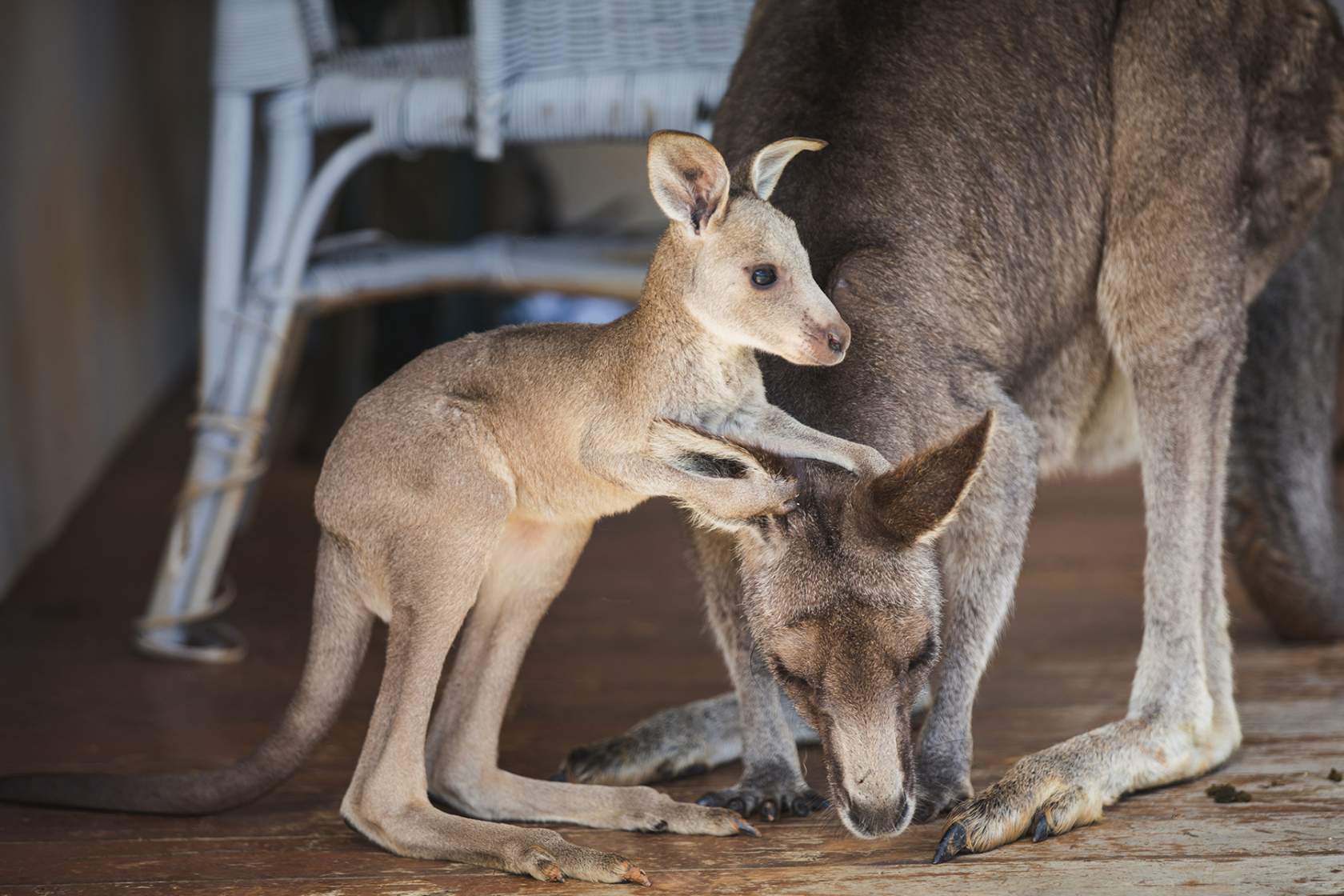
What can you do to help?
The most common kangaroo report made to Wildlife Victoria is when an animal has been hit by a vehicle.
Kangaroos are crepuscular, meaning they are most active at dawn and dusk and will actively forage for food at this time. Native vegetation is often concentrated around roads placing animals at greater risk of being hit by passing vehicles.
For your safety, and theirs, when driving in areas with high kangaroo populations, reduce your speed at dawn and dusk. In conditions of poor visibility, such as fog or rain, decrease your speed to allow yourself more time to react to animals crossing the road. Remain vigilant by scanning for wildlife near the roadside and observing wildlife crossing signs. Adjust your driving speed to match road conditions to avoid potential collisions. If you observe a kangaroo crossing the road, proceed with caution, as other members of the mob may follow.
In the event of an accident involving a kangaroo, please pull over (when safe to do so) and call Wildlife Victoria’s Emergency Response Service on (03) 8400 7300 for assistance. Even if the kangaroo appears to have escaped the scene, it is likely injured and will require help.
A deceased female kangaroo may still have a live joey in their pouch and will need to be checked. Find out how to check a pouch here.
As Melbourne and other Victorian urban centres continue to expand, kangaroos living near growth areas are increasingly confined to smaller areas, resulting in denser populations and more human/wildlife conflict. This displacement causes kangaroos to venture into urban environments, with reports of them being rescued from unusual locations such as multi-level car parks and even inside shops. Kangaroos are soft-footed creatures and hopping on concrete can cause significant injuries. If you see a kangaroo in an urban area, please report them to our Emergency Response Service on (03) 8400 7300.
During winter, we usually receive an increased number of reports of kangaroos impacted by phalaris toxicity. Phalaris, also known as canary grass, is an introduced perennial grass which causes neurological damage in kangaroos resulting in a “drunk-like” appearance. Symptoms to note are muscle tremors, lack of balance, erratic tail movements, seizures, and head flopping.
If you see a kangaroo exhibiting symptoms of phalaris toxicity poisoning, please keep a safe distance from the animal to minimise stress and contact our 24/7 Emergency Response Service on (03) 8400 7300.
